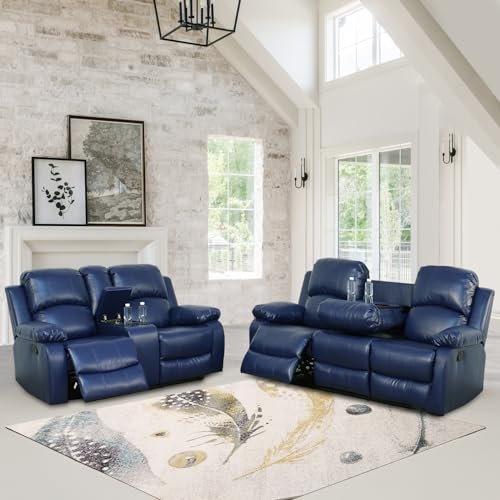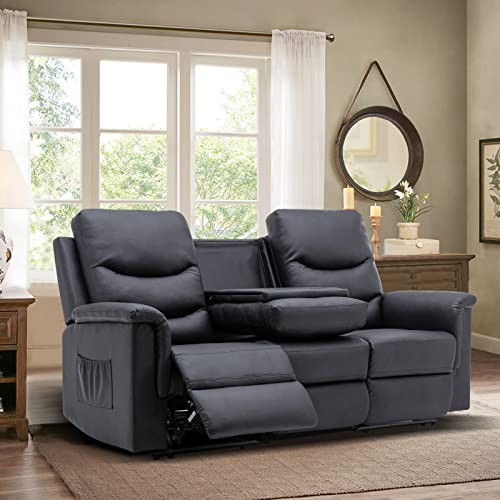What's The Job Market For Genuine Leather Sofa Professionals Like?
페이지 정보

본문
 How to Spot a Genuine Leather Sofa
How to Spot a Genuine Leather SofaWith a buttery-soft leather upholstery the sofa looks stunning in any room. Customers love its simple style and its high-end genuine leather upholstery.
 Untrained eyes might have trouble identifying the difference between real and fake leather. Here are six helpful ways to tell the difference: 1. Rough edges.
Untrained eyes might have trouble identifying the difference between real and fake leather. Here are six helpful ways to tell the difference: 1. Rough edges.1. Labels are crucial
Real leather is hard to duplicate. It's unique in appearance and feel. It's also durable and easy to clean. It does not absorb body oils, making it a perfect choice for those with allergies. However, not all leather sofas leather are created equally. Some retailers are even recognized for presenting PVC as genuine Leather.
Understanding the different types of leather will help you avoid being ripped off. This includes determining full grain and top-grain leather, and also evaluating the quality material of the upholstery. Retailers with discerning eyes will be more than willing to share this information So don't hesitate inquire!
The first step to identify a genuine leather sofa is to look at the label. It should clearly identify the type of leather the sofa is covered in, as well as any other material such as fabric or cotton. The most reliable suppliers should also have clear policies regarding exchange or return in the event that you are not happy with your purchase.
If the sofa doesn't come with a label, you can still work out its authenticity by looking at the fabric backing or opening the cushion casing to look for synthetic materials. You can also look at the texture of the leather to see if there are any bumps or blemishes. These are indicators that the leather is fake or bonded.
Another way to test the integrity of a sofa is touching its surface by rubbing your fingers. Genuine leather has a soft and smooth texture, while faux or bonded leather will be more coarse and feel more like suede. You should also be in a position to feel the difference between bumps, wrinkles, and printed patterns of faux leather and genuine leather.
While a genuine leather sofa will cost more than a imitation counterpart, it's an investment that will last longer and can often become family heirlooms over the years. You can reduce the damage caused by sun as well as ozone, heat and humidity by putting your leather sofa in a cool, dark area far from fireplaces, heaters and air cooling units. Leather protection creams can be used to keep your leather sofa sturdy and soft.
2. Look at the back
If the label doesn't inform you what kind of leather a sofa is, it's important to get close and personal with it. The smell, feel, and back will all be clear indicators of authenticity.
When you get a feel of genuine leather, it may not feel smooth and silky. This is due to the fact that animal hides have a variety of pores that allow them to breathe. A product that feels completely smooth could be fake leather.
Be aware of bumps and uneven surfaces. Genuine leather is prepared by buffing away the rough outer layer. If the leather covering your sofa is top grain leather, there will still be some bumps.
You can also test the leather by putting your fingers into it and running it over it. If it is real, the leather will stretch and wrinkle slightly as human skin does. This means it's able to breathe, ensuring that the leather does not become dry and crack with time.
Faux leather is uniform in pattern due to the fact that it is printed, whereas genuine leather will have imperfections that enhance the beauty and durability of the leather. This includes creases, scratches and scuffs. A genuine leather sofa (simply click the up coming webpage) will be soft and a bit stiff when new, however it should not break or dry out over time if it is conditioned regularly with a special leather protection cream.
To cut costs, some furniture makers make use of a mixture of real and synthetic leather for their products. The contact areas, such as the arm rests, seats and backs, are constructed from genuine leather, while the non-contact components, like the base and outside arms, are covered with a less expensive polyurethane or a synthetic leather. This is a typical practice and even if the sofa has a genuine leather label You should examine it carefully to see what the backing is made of, as it is a clear indication that it isn't true genuine leather.
Labels and pricing can help identify a genuine leather sofa, but it is important to inspect it up close. Smell it, touch it, and then check its back for a polyurethane backing, which is a clear indicator that it is not genuine leather.
3. Take a look at the seat
The seat of a genuine leather sofa is an additional indication of its quality. Genuine leather is distinct from faux leather, which uses a combination of materials. It has a unique texture and feels soft when you touch it. Be aware of bumps under the surface and a strong, natural scent. These characteristics differentiate real leather from fakes or low-grade leather.
Another indicator is if the leather is stitched together in a long, continuous piece. Although this isn't uncommon with faux leather, if you observe this with genuine top-grain leather, it's most likely a sign that the sofa is lower-quality and should be avoided.
The label and price may give you an idea, but the only sure method of knowing is to actually touch the furniture. Real leather is not perfect, and it will feel uneven to the touch. It will also have rough edges and fat wrinkles beneath the surface. Genuine leather is soft and distinct from synthetic materials. The temperature of the furniture can be a sign of whether it is made from authentic materials.
A leather sofa is a mainstay in interior design for a reason: It's elegant, durable and long-lasting. It is also easy to clean and resistant to liquid spills. This makes it a great choice for families who have children or pets. The best thing about genuine leather, is that it's a classic design that won't go out of style and is still available in a variety of prices.
If you're looking for a classic leather sofa that can last for a long time, consider the Pottery Barn Turner. Although this two-seater is more expensive but it's made of high-end top-quality leather and features an elegant design that won't date quickly. This is a great option for those with limited space, as it comes three sizes and can fit in almost any room.
If you're looking for something bit more modern, you should consider this All Modern Geo Genuine Leather Sofa. The mid-century-modern-inspired sofa has an angular, sleek design with cylindrical pillows and an elegant frame. The sofa is constructed of plywood as well as composite and plastic. However, the leather is only used in the seating area. It is an improvement over Ikea's faux-leather sofa that won CHOICE’s "Shonky Award" in 2015.
4. Check out the smell
Genuine leather has a distinct scent. It's an organic, natural scent that cannot be duplicated. If the sofa you are looking to purchase has a strong synthetic scent it's a sign that it isn't genuine. Most often, this is due to the chemicals used in the process of making the leather, which remain in the furniture after it's been manufactured and even after you bring it home.
A great way to determine the quality of a leather sofa is to gently rub your fingers across the surface. Real leather will feel rough and have bumps and lumps, just like human skin. If it is smooth and cold, it is most likely fake or the leather is bonded.
Alternatively, you can open one of the cushions and look at the back. False and bonded leather may have a polyurethane backing that supports the manufactured upholstery, while genuine leather has an untreated back that is similar in appearance to coarse suede. If you notice a woven backing, this is an indication that the couch isn't real leather.
Peter says that the best leather sofa way to tell whether a sofa is genuine is to gently rub your fingernails on the surface. The grit of the leather will cause your fingers to become dull, and the surface will stretch and wrinkle a little. It also feels warm to the touch.
Reversing the sofa to its back and examining the upholstery will tell you if it is genuine. Genuine leather is a continuous piece of leather, not a plastic coated faux or bond leather.
When deciding on the quality of your leather sofa, take into consideration the amount of use it will receive and how long you'd like it to last. The more you use your sofa, the more it will require to be maintained. Peter suggests a regular, gentle cleaning using a conditioner for leather. This will help to keep the leather's softness and keep it from drying out and becoming hard.
- 이전글Education Minister of Jamaica 1987 and 1988? 24.07.05
- 다음글10 Search Optimisation Projects Related To Search Optimisation To Extend Your Creativity 24.07.05
댓글목록
등록된 댓글이 없습니다.